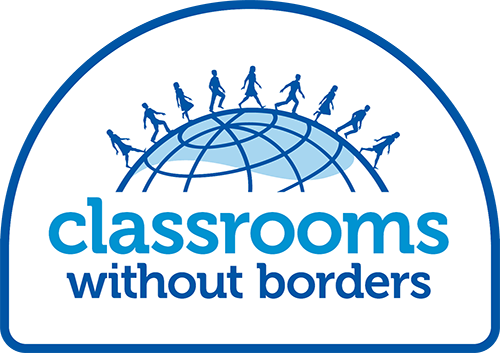By: Joshua Andy
Returning to Poland with Classrooms Without Borders is an opportunity to continue to add to my repertoire of individual stories of those who were victims of the Holocaust, those who were bystanders, those who collaborated with the Nazi occupation, and those who perpetrated the brutal acts of genocide and crimes against humanity. More importantly, it offers another chance to understand humanity and our shared compassion for others from the lessons of those who stood up – those upstanders whose moral and ethical compass remained true. As we touched down yesterday in Warsaw to a bright, sun-filled morning, our group traveled directly to the Okopowa Street Jewish Cemetery. One hundred fifty thousand Jews have their final resting place here. One story that continuously speaks to me in my study of the history of the Holocaust is the life of Janusz Korczak. Korczak was an internationally known educator and pedagogue born in the 19th century. Learning Korczak’s story on my last journey to Poland two years ago, I’ve used his works and life in my classroom. As an educator and pedagogical innovator, Korczak focused the individual importance of every child. His writing on the rights and dignities of the child heavily influenced the UN Declaration on the Rights of the Child. Korczak’s Warsaw orphanage was forced to relocate inside the Warsaw Ghetto in 1940. Because of the respect and renown Poles and the international community had for the educator Korczak was offered several chances to be smuggled out of the Ghetto. Refusing to leave his charges, Korczak remained in the Ghetto. 
As the Ghetto was being liquidated in 1942, the SS came for the children of Korczak’s orphanage. Even in this dire time, Korczak refused the aid of the Polish Underground to spirit him to the ‘Aryan side’ of the Ghetto wall. Maintaining his humanity until the end, Korczak instructed the 192 students to dress for a picnic, chose their favorite toy to carry, and he lead them, four abreast, through the streets of the Ghetto to the Umschlagplatz, the place of deportation. Korczak carried two toddlers in his own arms.
Wladislaw Szpilman’s memoir, The Pianist, recorded what the Jews of the Ghetto saw that August day. Others speak to the powerful sight of watching this man, ‘head bent forward,’ leading the orphans through the streets of the Ghetto.
Janusz Korczak and the orphans were forced onto trains and sent to Treblinka. Refusing to save his own life, Korczak maintained his humanity and was murdered together with his orphans at Treblinka in 1942. The following photograph is of the memorial to Janusz Korczak in the Warsaw Jewish Cemetery. On Tuesday, we will travel to Treblinka, were the only memorial stone to a single individual reads one name – Janusz Korczak.
